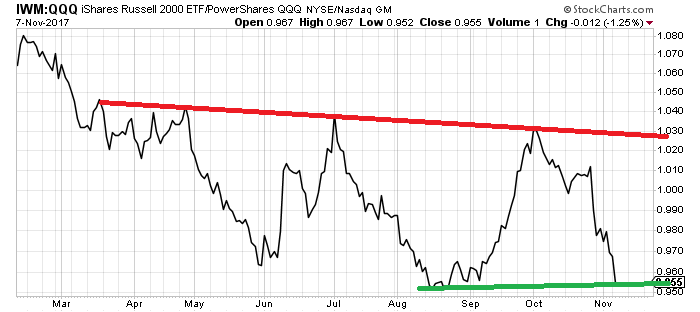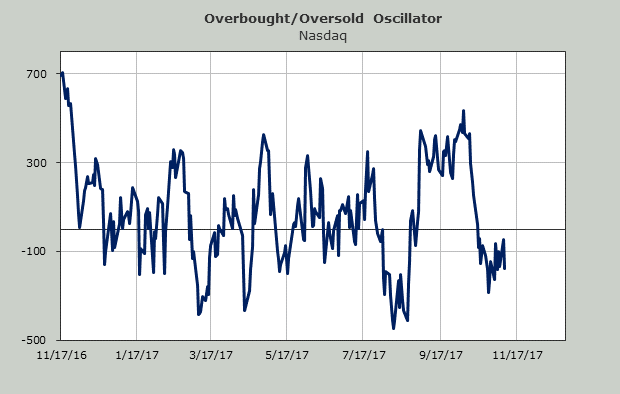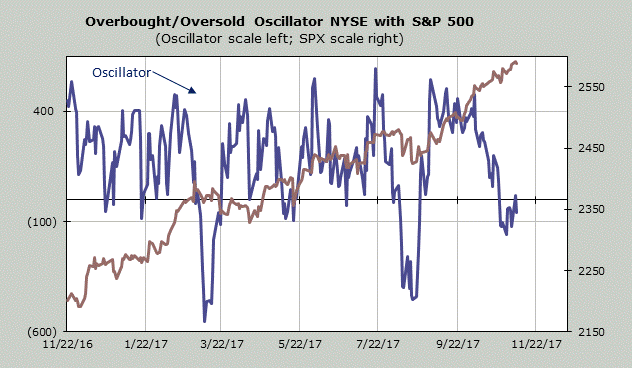Let's talk about the last five weeks in the market.
In early October, I said it was all about the market breadth. As long as breadth stayed strong, the market was OK. Of course, it began to weaken. But it took two weeks for it to be absorbed and then influence the indicators. Sometime in mid-October, many of the breadth indicators began to roll over.
For the last three weeks, most folks didn't care. The major market indexes have continued on their merry way upward. Recall that about two weeks ago I wrote about all the stocks that were gapping up and down and all the dislocations underneath. No one much cared.
On Tuesday, it was as though a lightbulb came on for so many market players. I call it realization day. It's the day they realize the market has a breadth issue. Not only was my inbox full of folks who wanted to discuss it. But my Twitter timeline was as well. But I knew it had finally been realized when I saw the folks on television discuss it. I mean, they spend more time on the fact that the Dow eked out an eight-point gain than they do on the fact that the travel stocks collapsed by double-digit percentages.
The divergence between the small-caps and the large-caps was what folks were most vocal about. As you know, back in early October we flagged the red line on this chart of the ratio of the Russell 2000 ETF (IWM) to the Nasdaq 100 ETF (QQQ) , and with few exceptions it has been a one-way trip. But now the green line is here and I'm waiting for some sign that we can see a higher low in the ratio, which so far has not happened.

So in some respects, the realization that small-caps have underperformed so much makes sense, considering it's been going on for five or six weeks. Realization days tend to come after the trend has been in place for a few weeks (or more). But it is my opinion that it was the selling in the bank stocks that bothered folks the most. The Bank Index hasn't gone anywhere in weeks and then it gave up two weeks in a day. It has filled the gap, so this will be a test to see how well it can hold up. When gap fills don't lead to a bounce, there is more weakness underneath than meets the eye.

The bottom line is that the divergences haven't mattered to the big-cap indexes, but they have begun to weigh on the small-caps. How fast does sentiment turn? Well, the put/call ratio went over 100% on Tuesday for the first time since Oct. 25. So we know sentiment has soured a bit more. I would prefer that it soured a bit more, especially since the Investors Intelligence bulls are at 64.4%, the highest reading in 30 years.


 info@businessghana.com
info@businessghana.com















